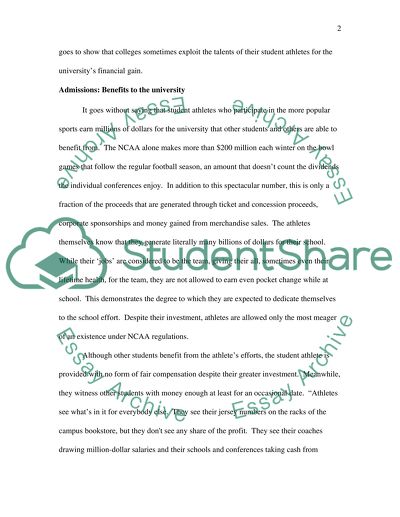Cite this document
(Exploiting Athletes or the Chance of a Lifetime Assignment, n.d.)
Exploiting Athletes or the Chance of a Lifetime Assignment. Retrieved from https://studentshare.org/sports-and-recreation/1543420-college-athletes-students-or-meal-tickets
Exploiting Athletes or the Chance of a Lifetime Assignment. Retrieved from https://studentshare.org/sports-and-recreation/1543420-college-athletes-students-or-meal-tickets
(Exploiting Athletes or the Chance of a Lifetime Assignment)
Exploiting Athletes or the Chance of a Lifetime Assignment. https://studentshare.org/sports-and-recreation/1543420-college-athletes-students-or-meal-tickets.
Exploiting Athletes or the Chance of a Lifetime Assignment. https://studentshare.org/sports-and-recreation/1543420-college-athletes-students-or-meal-tickets.
“Exploiting Athletes or the Chance of a Lifetime Assignment”, n.d. https://studentshare.org/sports-and-recreation/1543420-college-athletes-students-or-meal-tickets.


